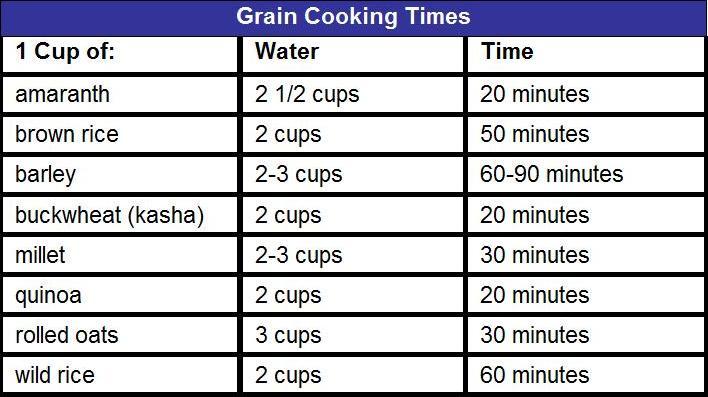The Glory of Grains!
The Glory of Grains
We find ourselves now entering that transition time – it’s still winter in most parts of the U.S., but every now and then we get those teaser days that are just a little warmer and sunnier. You may have even noticed a few early-bird plants poking their heads above ground!
These almost spring-like days can make our bodies start craving different foods. You may have noticed yourself starting to turn away from the heavier soups and stews of winter, looking for lighter fare. Yet, we all know that there’s still more cold weather to come, before it truly gets warm. And our bodies still need some hardy and robust foods as we move through the last month or two of winter.
Nature’s gift
Fortunately for us, Mother Nature has provided us with the perfect foods for this time: whole grains. We’re not talking whole wheat bread or whole wheat pasta here, ladies, though they’re both better options than the overly-processed white flour varieties.
When we talk about whole grains, we’re talking about cooking and eating those grains in a form that is as close as possible to how they were when they left the plant. Most whole grains are available in dried form, and are re-hydrated during soaking and cooking. Having received very little processing before reaching your table, they are still chock-full of nutrients.
Most grains are high in the B vitamins in particular, providing building blocks for serotonin production – allowing whole grains to act as a mood enhancer. Grains also contain both protein and carbohydrates, making them a good energy food, and since they tend to digest and enter the bloodstream more slowly than their processed counterparts, they also work to balance blood sugar levels.
What to look for
Most of us have by now at least heard of brown rice, even if we’re not already cooking with it. Other grains to look for include spelt, millet, quinoa (a South American grain, pronounced “keen-wa”), amaranth, barley, and buckwheat (or kasha). Did you know that in Russia, kasha is the main staple for getting through the winter? For beating symptoms of Seasonal Affective Disorder (SAD), kasha is definitely king!
Most grains are pretty simple and easy to cook – there are just a few simple steps to remember to ensure a successful dish:
- Be sure to rinse your grains before cooking.
- This step is optional, but many people recommend soaking your grains in a bowl of water before cooking (soaking time can be anywhere from 1/2 hour to overnight) – this makes their nutrients more bio-available, and removes their layer of phytic acid, which can interfere with absorption of some minerals. If you do decide to soak, be sure to drain the grains and discard the soaking water before cooking.
- You can add a pinch of sea salt when cooking, or even better – throw in a piece of kombu (or your sea veggie of choice) – it helps to make the grains more digestible and flavorful, and adds important minerals.
- Never stir or disturb your grains while cooking – they’ll cook more evenly and have a better texture if you just let them be.

Are you ready to give it a try? Just add the recommended amount of water for your grain, and follow the standard cooking times below. Season with your favorite oil and/or vinegar and enjoy as a side dish, or add a veggie and a protein source for a one-dish meal-on-the-go. Once you’ve got the hang of it in smaller amounts, we recommend making a large pot of grain on the weekend, which you can then eat throughout the week!
For more ideas on cooking with whole grains, check out Rebecca Wood’s fabulous cookbook, The Splendid Grain. You’ll find loads of inspiration for dressing up your favorite grain varieties!






















